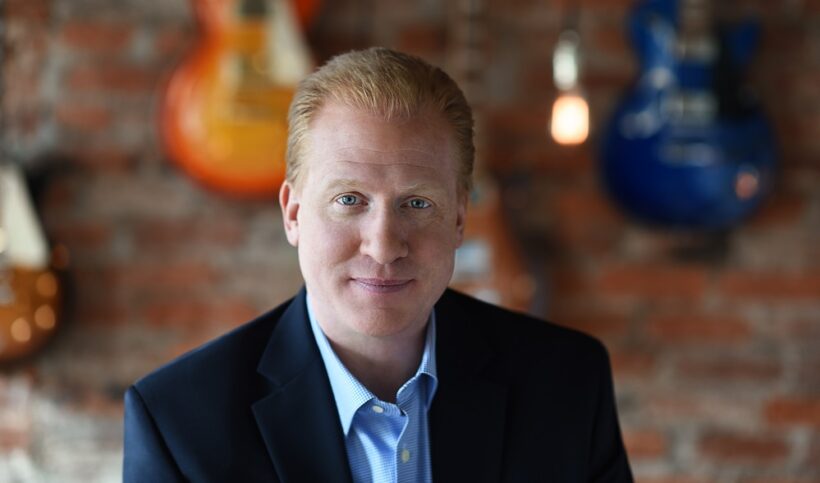Michael Huppe is president-CEO of SoundExchange, a non-profit rights- management organization that provides products and services to collect royalties for more than 650,000 artists, labels and publishers.
At the National Association of Broadcasters’ (NAB) annual convention in Las Vegas this past week, the organization celebrated 100 years of representing big broadcasters’ interests in Washington, D.C. But for the music community, the moment served as a different centennial marker: 100 years of failing to pay artists for the use of their music on AM/FM radio.
It doesn’t matter if the artist is a Grammy Award-winning pop star known around the world, an everyday musician, or an up-and-coming local artist – if their work has been played on U.S. radio airwaves, that performer has never been compensated for that usage. [Editor’s note: While the more than 8,300 AM and FM terrestrial radio stations across the country pay royalties to songwriters and publishers, they have never paid performers or copyright holders, although streaming services and satellite radio do.]
This mistreatment comes as a surprise to most people, and it’s easy to understand why. In every other industrialized and democratic nation in the world, artists are paid for the use of their work on terrestrial radio. The same is true for every other platform in the U.S., where laws around streaming on the internet, satellite, and cable recognize the value that artists bring. The failure to compensate artists for AM/FM airplay is unique to the U.S., is an utter denial of the bedrock American principle of fair pay, and is a direct result of a longtime profits over all else campaign by the industry’s powerful, century-old radio trade association and lobbying arm.
While Big Radio has vigorously resisted spending more than $0 for the music that drives their entire business model, they have been willing to spend big to avoid paying for it. In the last 20 years alone, the NAB has spent nearly a quarter billion dollars on lobbying efforts, and defending this antiquated loophole was often at the top of their list.
This large lobbying spend has been funded by radio’s jaw-dropping revenue over the last century, which amounts to an estimated $700 billion — of which the artists received exactly zero.
But now, artists are gaining traction, and they are not alone in their fight. They have allies from within radio’s own ranks – small and community broadcasters. For decades, the NAB has deployed the tactic of pitting artists and small broadcasters against each other, falsely claiming that paying the former would put the latter out of business. But the reality is that small broadcasters and artists — especially up-and-coming performers — have always enjoyed a close, mutually beneficial relationship. It’s entirely possible to ensure that performers get compensated for their hard work and protect the local broadcasters that enrich our communities.
The biggest threat to both artists and small broadcasters emanates from the same source: billion-dollar broadcasting corporations. For years, these Big Radio behemoths have gobbled up countless local stations — cutting local jobs and nationalizing their playlists in the process. This acquisition creep has led to a steady diet of a few top hits played over and over on hundreds of sister stations across dozens of markets – hardly demonstrating the localism that Big Radio likes to tout.
By contrast, small broadcasters function as one of the last remaining sources of local content. Tune into a community station, and you’ll hear the local artists and musical genres that are absent from the majority of stations owned by media giants. Small broadcasters reflect the unique and hyperlocal interests of their communities, giving voice to diverse, up-and-coming artists that aren’t given the time of day by Big Radio. That’s why some small broadcasters have spoken out in support of artists’ efforts to secure fair pay.
Thankfully, there is a solution to this century-old injustice. The American Music Fairness Act (AMFA) — a bipartisan piece of legislation that aims to continue the strong relationship between music artists and small broadcasters — is gaining traction in Congress. In addition to providing artists with fair compensation for the use of their music on AM/FM radio, AMFA looks out for small broadcasters by stipulating that any station with less than $1.5 million in annual revenue (that is not otherwise part of a huge broadcasting conglomerate) can play all the music they want for less than $2 per day. (Fun fact: That means unlimited music for an entire year would cost small broadcasters far less than a single ticket to the NAB’s centennial show this week.)
These protections offer clarity, predictability, and affordability that will help small broadcasters thrive — and continue serving local content to their communities for decades to come.
As broadcasters convened in Las Vegas in celebration of the NAB’s 100th anniversary last week, music artists, community broadcasters, and their allies continued to rapidly build momentum for a more important milestone. This year can and should be remembered as the year we finally make the AMFA the law of the land. Not only because it will finally provide music artists the fair pay they deserve while simultaneously protecting small broadcasters but also because it’s simply the right thing to do.
When it comes to stiffing hard-working artists, 100 years is long enough.
Read More About:
Source: Read Full Article

